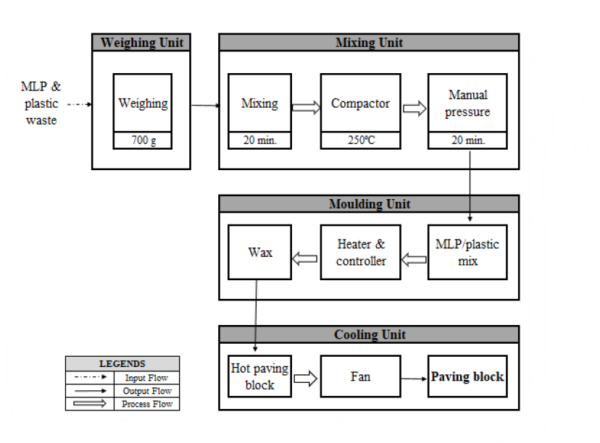Life Cycle Assessment: From Packaging into Paving Blocks

Research explores the environmental impacts of transforming multilayer metalized plastic packaging (MLP), commonly used in consumer goods, into paving blocks (PVBs).
Indonesia produces more than 31 million tonnes of waste each year, and a substantial amount of plastic remains in landfills for centuries. Researchers at the National Research and Innovation Agency in Indonesia have proposed an innovative solution: using multilayer metalized plastic (MLP), a common but difficult-to-recycle material due to its complex layers, to manufacture durable paving blocks.
You can also read: Recycled Plastic Pavers Deflect Rainwater From Urban Surfaces
Methodology and LCA Findings
The research utilized the openLCA software and ecoinvent 3.8 database to perform a gate-to-gate assessment, comparing the environmental impact of producing paving blocks PVBs from multilayer metalized plastic (MLP) with conventional disposal methods. The study found that while converting MLP into paving blocks requires substantial energy input—largely due to the manufacturing processes—it offers a lower environmental impact in certain key areas compared to traditional landfill methods.

PVB production from MLP/plastic bag waste. Courtesy of Environmental impact study on conversion of multilayer metallized packaging to paving blocks with a Life Cycle Assessment (LCA) approach.
Reduced Eutrophication and Ecotoxicity
One of the most significant findings of the study is the reduced eutrophication and freshwater aquatic ecotoxicity associated with PVB production. These reductions are crucial, as they indicate a lesser impact on water bodies, potentially leading to healthier aquatic ecosystems. This aspect of the study highlights the dual benefits of MLP conversion: reducing plastic waste and mitigating its environmental consequences.

Life cycle assessment results. Courtesy of Environmental impact study on conversion of multilayer metallized packaging to paving blocks with a Life Cycle Assessment (LCA) approach.
Challenges and Comparative Analysis
However, the conversion process is not without its challenges. The study reveals higher acidification potential due to the increased energy requirements of PVB production. Yet, when considering the overall environmental benefits, including the substantial reduction in landfill waste and lower long-term ecological damage, the advantages begin to outweigh the drawbacks.
The study concludes that converting MLP to PVB is a viable and environmentally beneficial method of managing plastic waste. This approach not only helps in reducing the volume of waste sent to landfills but also repurposes it into useful products. Looking forward, the researchers advocate for the optimization of the conversion process to further minimize energy consumption and enhance the sustainability of this innovative recycling method.
By turning plastic waste into functional paving blocks, this study provides a promising path forward in the global effort to tackle plastic pollution and highlights the potential for such innovative recycling solutions to contribute significantly to environmental sustainability.
